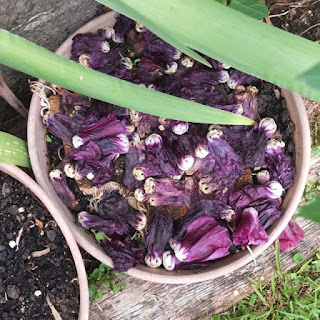Having stupidly said I would take one of our Play Day sessions, I opted to try playing with scrim and gesso. As I haven't done it since last year, and as I can't actually think of a project to use it in, it is all a bit hard to think about.
However, I said I would do it and now I am playing around with it in the hopes that something will come to me that will work in a two hour session.
So ...
Over this weekend I have played.
I have made a few samples but, because I don't have a project in mind, have felt a bit at sea.
I am still considering what I might do about a fossil project that is coming up, so I have done my images based on that. But I haven't really chosen suitable colours, not knowing exactly what I want.
Still, it has been involving and allows me to think about this and not much else. So it has been a bit therapeutic.
I have taken some notes - most unusual for me! But I keep getting side-tracked and trying something that occurs to me at the time. So I had better get it all organised here before I forget what I did.
First try:
I have this image that I have used before. I traced it onto some adhesive interfacing. One thing I did find, ironing it to the adhesive interfacing tends to flatten the scrim, so I might try something different another time.
Then I sewed it, using free motion on the machine, over the image.
I decided that I needed to keep the edges controlled better and sewed them down too.
Then I painted gesso onto it. Some of the gesso seemed rather thick, so I watered down some areas. I made sure to get the gesso under the layers as much as possible.
After it has dried, I painted it using some acrylic paint that was left in a palette that I had been using with some children. Waste not, want not.
So no real plan for the colour scheme!
We have a theme, Ebb and Flow, coming up at the guild, so I might try to incorporate this technique in that. I can see waves and foam in the blue parts.































